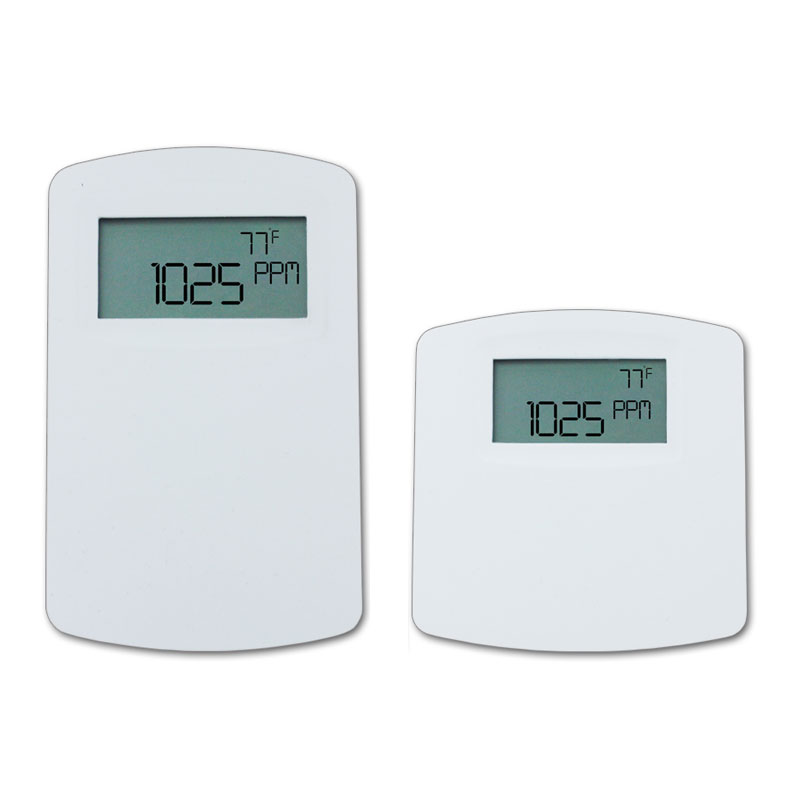Master of None: Combination Room Sensors
Master of None: Combination Room Sensors
As building systems advance, they require additional data to automate the decisions to control the building’s conditions. Although increasing the number of devices on the wall of a room accomplishes this data collection, many building owners and architects despise what it does to the aesthetics of the room. Additionally, controls’ integrators are also increasing their labor of installing and wiring the superfluous devices. To reduce the number of devices that have to be mounted, many sensor manufacturers have begun to develop combination sensors that measure multiple parameters in a single enclosure. While this solution appears on the surface to be ideal, there are serious issues that keep some controls’ integrators from selecting these devices. The primary issue is that these instruments appear to be a “jack of all parameters; but, a master of none.” The accuracy of the individual parameters suffers as a result of the presence of the electronics for the other parameters. This case study takes a look at Dwyer Instruments, Inc.’s experience in developing combination sensors that perform roughly equivalent to the level of individual parameter sensors.

The original purpose of redesigning the wall mount family of sensors was the size and look of the housing. Customers from around the world were given the opportunity to pick from an array of housing styles and shapes. Mounting configurations for different regions of the world added an additional twist in the design phase. In the end, two housings were selected to fit the mounting configurations of North America and Europe that met the aesthetic requirements of the customers sampled. The housings were much lower profile and more compact than previous housing versions. This led to challenges in fitting all of the PCB components in the smaller space. Using BACnet™ and Modbus® serial communications allowed additional parameters such as occupancy override and temperature set point to be added to the carbon dioxide, temperature, and humidity combination sensors.
After the housing and circuit board was completed, the engineering team faced the problem of combination sensor accuracy versus single parameter accuracy. Issues arose by a lack of sufficient air flow through the housing, since it needed to dissipate the heat generated from the PCB components. Power supplies, current outputs, LCD displays, and heat generating sensors such as the NDIR carbon dioxide sensor can raise the internal temperature in the housing buy 10 to 12 degrees Fahrenheit. This large rise in internal temperature caused errors that were difficult to compensate for in both the temperature measurement and the humidity measurement. Testing of the new wall mount units along with competitors’ units showed that this was a common issue in the industry. So, the decision was made to push back the launch date seven months to make hardware and firmware changes that would bring the accuracy within 0.5 to 1 degree for the temperature and within 2% for humidity.
Digital Intelligent Temperature Compensation Algorithm (DITCA™) is a patent pending method of solving the issue of internal temperature rise and how that rise affects the accuracy of the various parameters. The DITCA™ compares measurements of temperatures inside and outside the housing to determine when compensation is required. Since the amount of compensation varies based on the internal heat that is being generated, the DITCA™ compensation algorithm also changes the level of compensation based on the temperature rise so that it is not overcompensating.
With other sensor suppliers, it was found that before units were even powered up, they were reading several degrees of error due to overcompensation. Also, since the units were using a static compensation, it was only accurate under very specific conditions and parameter measurements. As the measurements varied from these conditions, the error increased. While some errors can be compensated for in the building management system, errors that vary based on conditions take a lot of additional programming efforts to try to compensate and require performance data of the sensor.
While combination sensors in general have their benefits and issues, the reduction of accuracy no longer has to be the major drawback if using a sensor that has the patent pending DITCA™ (Digital Intelligent Temperature Compensation Algorithm) since as technology continues to advance, the accuracy of these sensors will continue to improve as a result.
